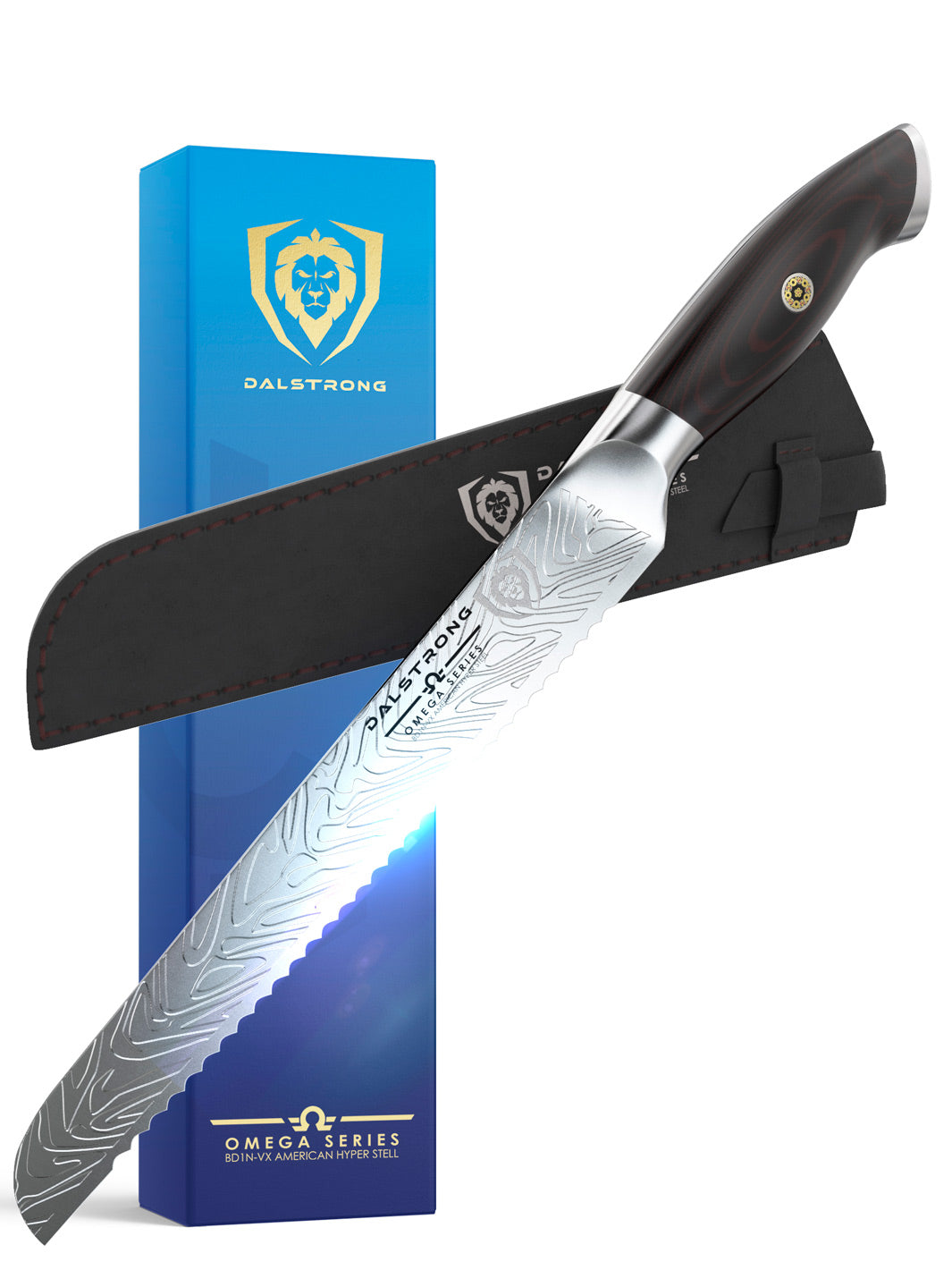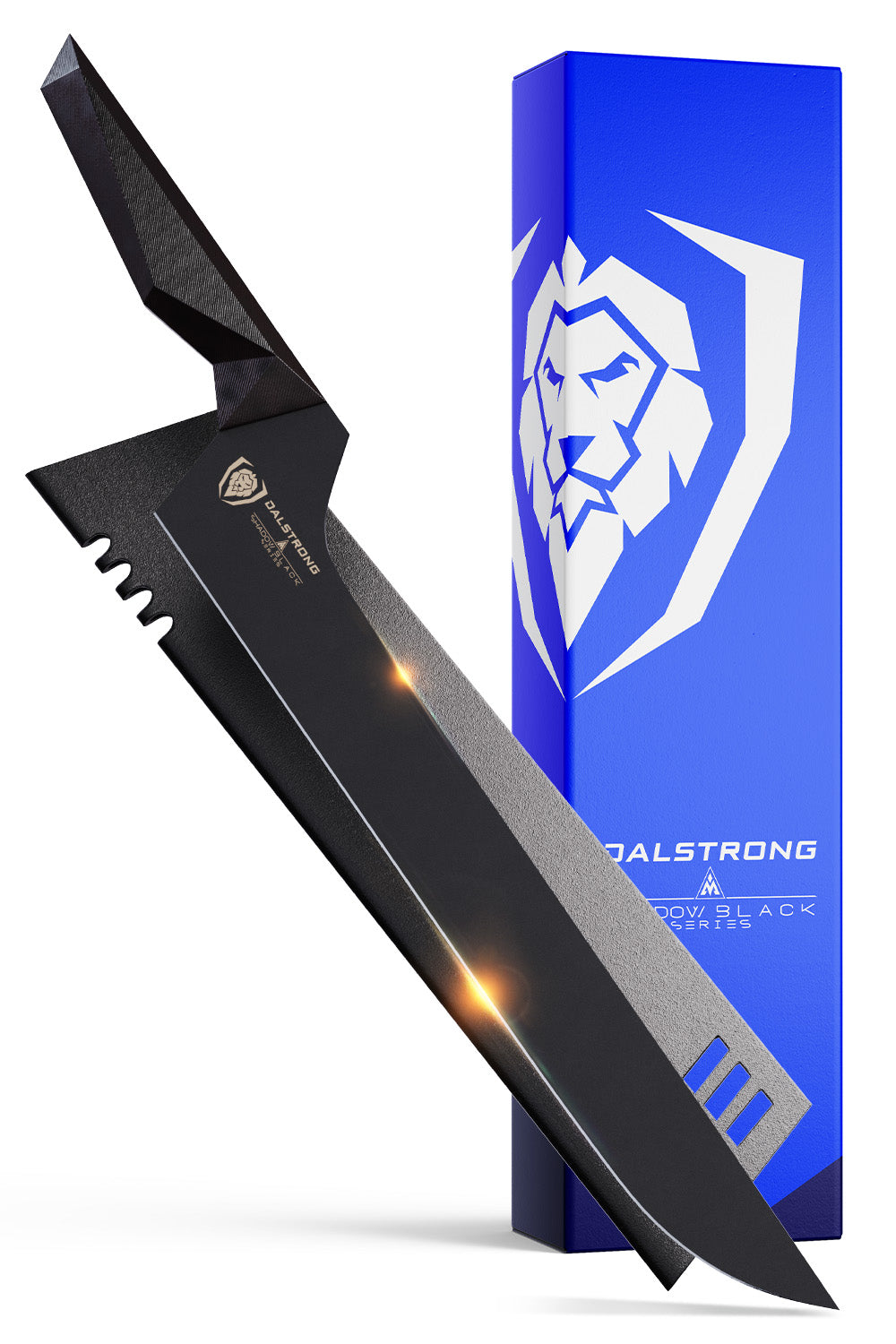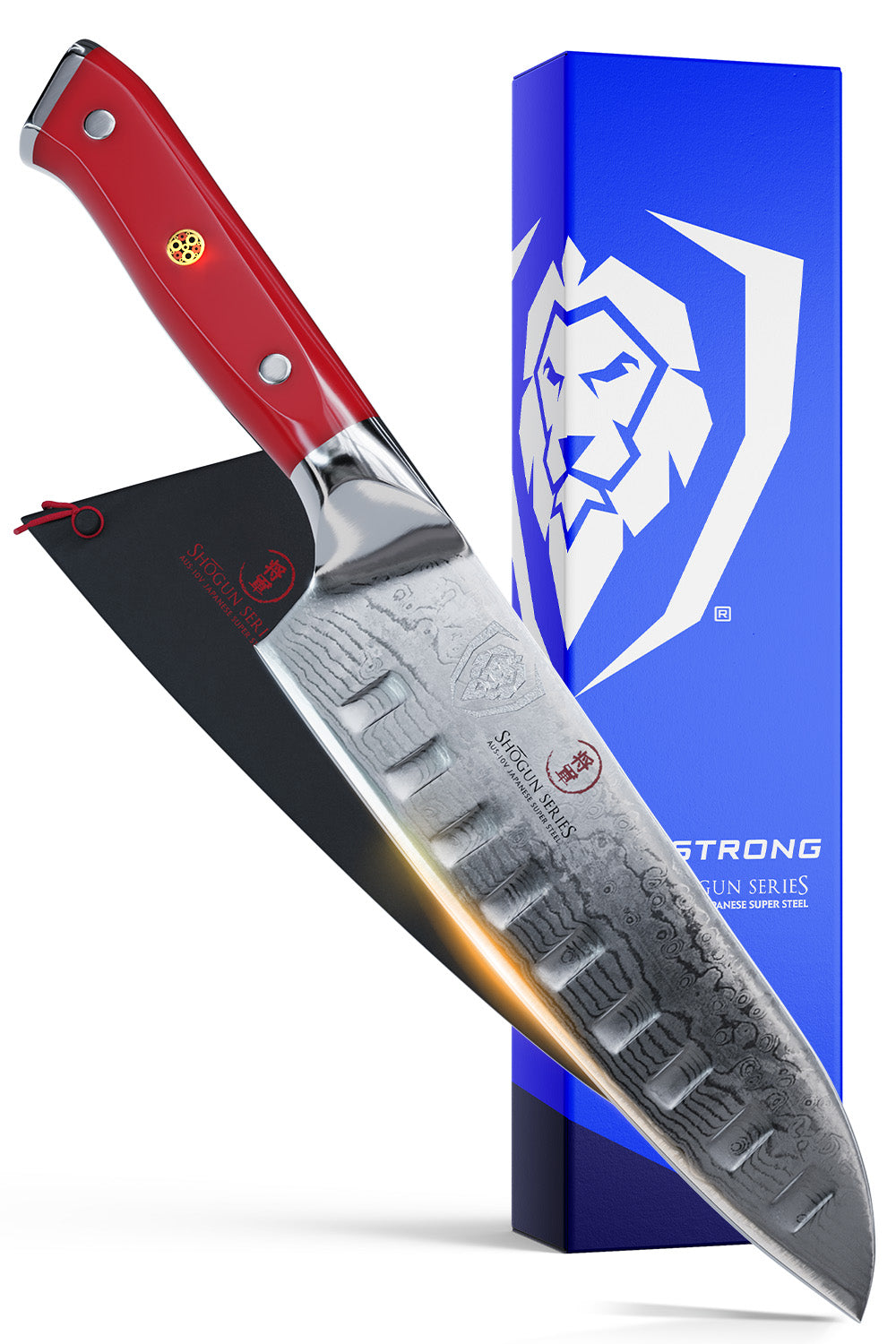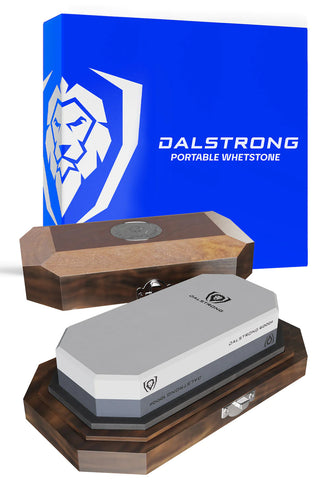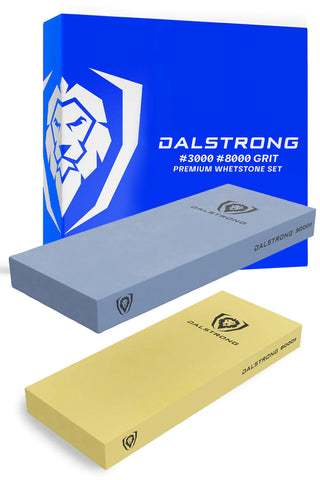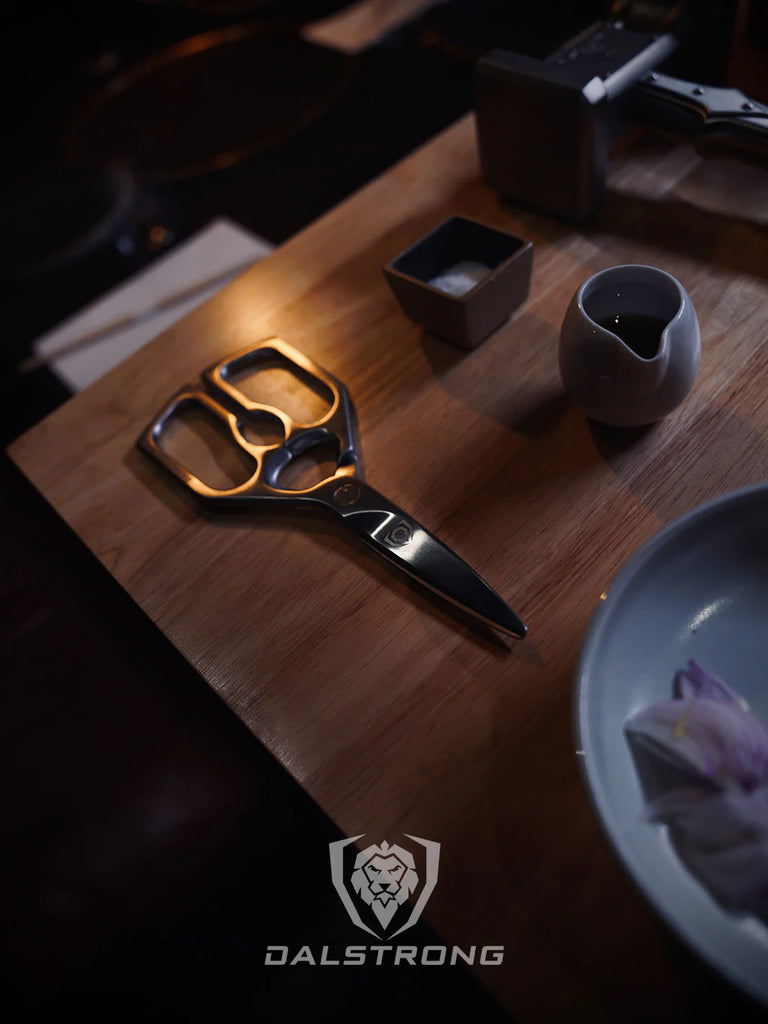 Professional Kitchen Scissors | 420J2 Japanese Stainless Steel | Dalstrong
Professional Kitchen Scissors | 420J2 Japanese Stainless Steel | Dalstrong
Quick Overview: How To Sharpen Scissors
- Gather a Dalstrong Whetstone Set with #3000 and #8000 grit stones.
- Soak stones in water for 10-15 minutes for lubrication.
- Check for damage or dullness on the scissors blades.
- Hold scissors at a 20-degree angle on the stone.
- Glide each blade across the stone, maintaining consistent pressure.
- Ensure even sharpening by switching sides after each stroke.
- Test sharpness by cutting paper or feeling the blades.
- Transition to the finer grit for a polished edge.
- Glide each blade across the #8000 grit stone, alternating sides.
- Wipe blades, clean stones, and store in a dry place for future use.
Figuring out when to sharpen your scissors is important to make sure they work well. Dull scissors can make cutting hard and frustrating. There are some signs that tell you it's time to sharpen them. Knife maintenance doesn’t have to be difficult.
1. How Do You Know When To Sharpen Your Scissors?
 #1000 / #6000 Grit with Nagura Stone & Rust Eraser | Premium Whetstone Kit | Dalstrong
#1000 / #6000 Grit with Nagura Stone & Rust Eraser | Premium Whetstone Kit | Dalstrong
First, pay attention to how they cut. If you feel the scissors are harder to use or if they don't cut things like they used to, they might be dull. Also, if they can't easily cut through stuff anymore, it's a sign.
Look at the blades. If you see chips or uneven edges, your scissors are likely dull. When the blades start tearing or crushing instead of making clean cuts, that's another sign.
Think about what you're cutting. Scissors for fabric might need more sharpening because they deal with tiny fibers. If you're having to use a lot of force to cut things, your scissors might need some attention.
Listen to the sound while cutting. If you hear a grinding or crunching noise, it means the blades aren't sharp. Checking and sharpening your scissors regularly can prevent them from becoming too dull.
You can sharpen them at home using methods like aluminum foil, sharpening stones, or sandpaper. Folding sandpaper and running the blades along the edge is a simple way to get them sharp again. Don't forget to wipe the blades clean and remove any bits stuck to them.
Pay attention to how they cut, check the blades, consider what you're cutting, and listen for odd sounds. Regularly using methods like folding sandpaper will keep your scissors ready for precise cutting.
2. How To Sharpen Scissors Step-by-Step
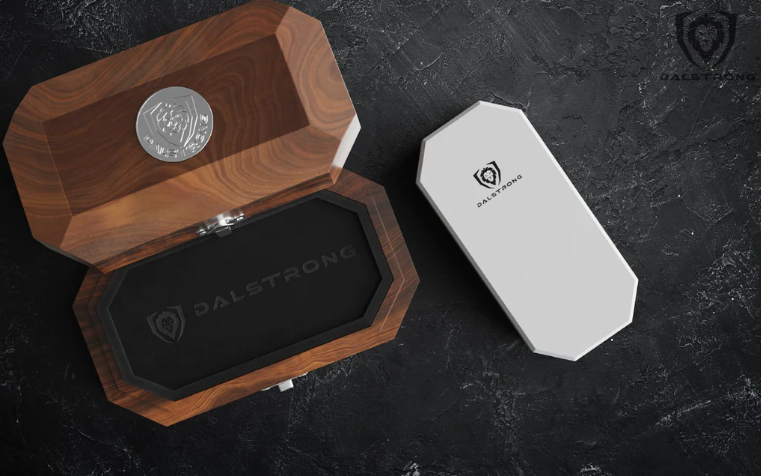 #1000 / #6000 Grit Combo with Oak Storage Box | Portable Whetstone Kit | Dalstrong
#1000 / #6000 Grit Combo with Oak Storage Box | Portable Whetstone Kit | Dalstrong
Sharpening scissors may sound tricky, but it's actually quite easy if you follow these step-by-step instructions. Whether you're using fabric scissors, kitchen shears, or any other type, these steps will help you keep those blades sharp and ready for action.
Sharpening with Aluminum Foil (Not recommended)
- To start, make sure you have everything you need. You'll require a pair of dull scissors, aluminum foil, a sharpening stone, or sandpaper. Having a damp cloth, a mason jar, and a paper towel will also be handy.
- Begin by wiping down the blades with a damp cloth to remove any dirt or debris. This ensures a clean surface for sharpening.
- Take a sheet of aluminum foil and fold it several times to create a thick strip. You can use this to sharpen the scissors.
- Hold the folded aluminum foil and make several cuts through it with your scissors. This helps in honing the blades and removing any small nicks or burrs.
- If your scissors need more sharpening, you can use a sharpening stone or sandpaper. Place the stone on a flat surface or fold the sandpaper and put it on a stable base. Hold the scissors at a 20-degree angle and gently slide the blades across the stone or sandpaper. Repeat this process until the blades are sharp.
- After sharpening, wipe down the blades with a paper towel to remove any residue or metal shavings.
- Check the blades for sharpness by cutting through a piece of paper. If they glide through easily, your scissors are ready to go. If not, you may need to repeat the sharpening process.
- To maintain the sharpness of your scissors, store them in a safe place, away from other tools or objects that could damage the blades.
Please note that although using aluminum foil can help sharpen the scissors, this process has high safety risks. It is much recommended to use sharpening stones for more efficient and safe sharpening process. Check below how it's done.
Sharpening with Whetstones (Recommended)
- Gather the Dalstrong #400 Coarse Sharpening Stone and #1000 Finishing Stone. Optionally, use the Acacia Wood Base for added stability.
- Before starting, soak the stones in water for about 10-15 minutes to ensure proper lubrication during sharpening.
- Begin with the #400 coarse grit for dull or damaged blades. Progress to the #1000 grit for an all-purpose sharpening and a polished edge.
- Hold the knife at a 20-degree angle against the stone. Maintain a consistent angle throughout the sharpening process.
- Using moderate pressure, glide the blade across the stone in a sweeping motion. Start from the base and move towards the tip.
- Ensure even sharpening by alternating sides after each stroke. Continue this process for a consistent edge.
- Periodically check the sharpness by carefully feeling the blade's edge or performing a paper-cut test.
- Switch to the #1000 grit stone for a finer finish. Follow the same sharpening process to achieve a mirror polish and a screamingly sharp edge.
- Wipe down the blades and stones after sharpening. For prolonged life, store the stones in a dry place.
3. Avoid These Scissor-Dulling Practices
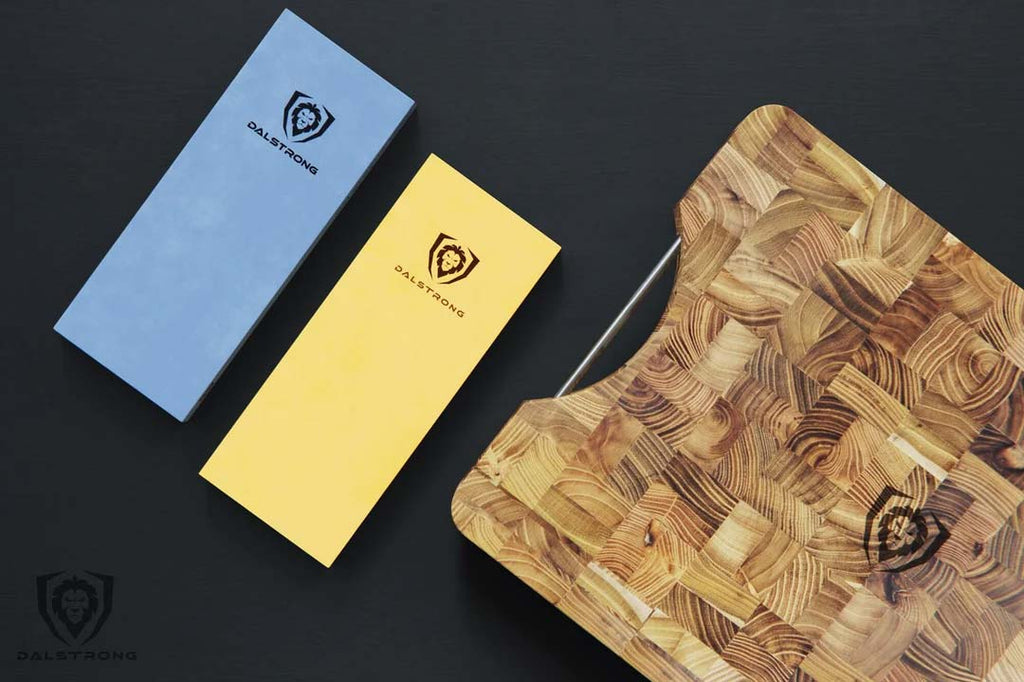 #3000 / #8000 Grit | Premium Whetstone Set | Dalstrong
#3000 / #8000 Grit | Premium Whetstone Set | Dalstrong
To keep your scissors sharp and efficient, it's important to avoid certain practices that can dull their blades. Follow these tips to maintain the sharpness of your scissors and extend their lifespan.
Cutting Tough Materials
Refrain from cutting materials that are too hard or tough for your scissors. Avoid cutting through things like wire, plastic packaging, or anything that can cause excessive wear on the blades.
Using Them as Tools
Don't use your scissors as a substitute for tools like screwdrivers or box cutters. Using them for tasks they're not designed for can damage the blades and make them dull.
Neglecting Cleaning
Failing to clean your scissors after use can lead to the accumulation of debris and substances that can affect their cutting ability. Always wipe the blades with a damp cloth and remove any stuck-on materials.
Storing Them Improperly
Storing your scissors in a crowded drawer with other tools can lead to them bumping into each other, causing damage to the blades. Store them in a designated space to prevent unnecessary wear.
Ignoring Regular Maintenance
Don't wait until your scissors are extremely dull before considering maintenance. Regularly check for signs of wear, and if needed, use methods like aluminum foil or sharpening stones to keep them sharp.
Overusing Fabric Scissors on Paper
If you have specific fabric scissors, avoid using them on paper. Paper can be abrasive and lead to quicker dulling of the blades. Save your fabric scissors for cutting fabrics only.
Read about how to clean sticky or rusty scissors in no time, here.
4. Dalstrong Tools You Will Need To Sharpen Your Scissors
1. #1000 / #6000 Grit with Nagura Stone & Rust Eraser
Elevate your knife care routine with the Dalstrong Premium Whetstone Set, a testament to award-winning craftsmanship and unparalleled design. Crafted from top-grade corundum, this two-stone kit ensures precision sharpening for both German and Japanese knives, scissors, and other tools. The #1000 grit tackles dullness, while the #6000 restores a mirror polish.
PROS:
- Unmatched craftsmanship and design.
- Two stones for versatile sharpening.
- Handcrafted Acacia wood base for stability and storage.
- Nagura flattening stone for ongoing blade care.
CONS:
- May be considered pricey for some budgets.
2. #1000 / #6000 Grit Combo with Oak Storage Box
Preserve the sharpness of your blades on the go with the Dalstrong Portable Whetstone Set. Crafted from premium Corundum, this double-sided whetstone in a sleek oak wood box offers #1000 grit for sharpening and #6000 grit for a polished finish. Whether you're a culinary explorer or a kitchen enthusiast, this portable kit is your trusted companion.
PROS:
- Portable and convenient for on-the-go sharpening.
- Double-sided whetstone with #1000 and #6000 grit.
- Stylish oak wood storage box with the Dalstrong logo.
- Comprehensive after-service care and sharpening guide.
CONS:
- May require some practice for beginners.
- The oak wood box, while stylish, may be prone to scratches over time.
3. #3000 / #8000 Grit | Premium Whetstone Set
Elevate your knife care with the Dalstrong Premium Whetstone Set, an embodiment of award-winning craftsmanship and unmatched design. Crafted from top-grade corundum, this set offers two individual whetstones, including a versatile #3000 grit and a polishing #8000 grit. The larger stones provide increased surface area, ensuring efficient sharpening for a variety of knives and tools.
PROS:
- Award-winning craftsmanship and design.
- Two whetstones for precision sharpening (#3000 and #8000 grit).
- Larger, thicker stones for increased surface area.
- Ensures a long-lasting scalpel-like edge for cherished knives.
CONS:
- May be considered a higher investment for some.
4. #400 / #1000 Grit | Premium Whetstone Set
Elevate your blade care with the Dalstrong Whetstone Set, a masterpiece of award-winning craftsmanship and awe-inspiring design. Crafted from top-grade corundum, this set features #400 coarse grit for even the dullest blades and a versatile #1000 grit for a mirror polish. Ideal for both German and Japanese knives, scissors, and other tools. The set comes with Dalstrong's renowned packaging, making it the perfect gift.
PROS:
- Two whetstones for precision sharpening (#400 coarse grit and #1000 grit).
- Compatible with optional Acacia Wood Base (sold separately).
- Rock-solid 100% satisfaction or money-back guarantee with a lifetime warranty against defects.
CONS:
- Acacia Wood Base sold separately.
5. Frequently Asked Questions
How do you sharpen quality scissors?
To sharpen quality scissors, use a top-grade corundum whetstone like the Dalstrong Premium Whetstone Set, offering #3000 and #8000 grit for precision sharpening and a scalpel-like edge.
How do you sharpen steel scissors at home?
Sharpen steel scissors at home with the Dalstrong Whetstone Set, utilizing the #3000 coarse grit for initial sharpening and the #8000 grit for a mirror polish and optimal sharpness.
Can you sharpen scissors with a knife sharpener?
While knife sharpeners may work for some scissors, it's recommended to use a dedicated scissor sharpener or a whetstone like the Dalstrong set for precise and effective sharpening.
Does cutting aluminum foil sharpen scissors?
Cutting aluminum foil can help maintain scissor sharpness, acting as a quick honing method to keep the blades in peak performance between more thorough sharpening sessions.




